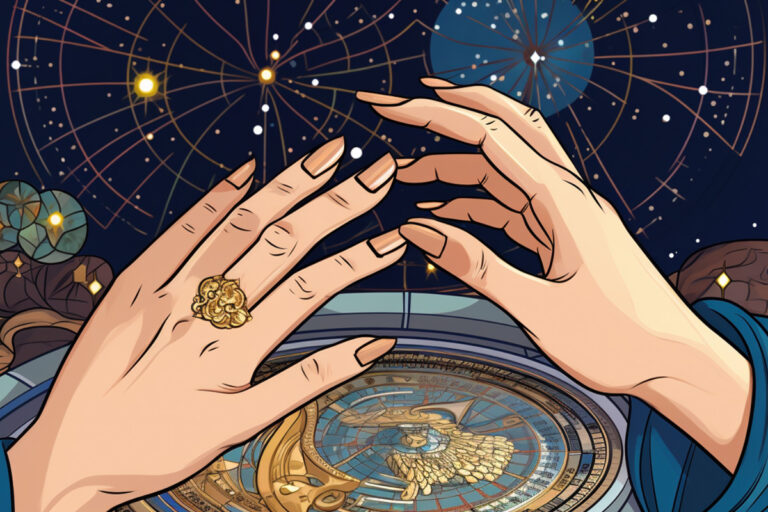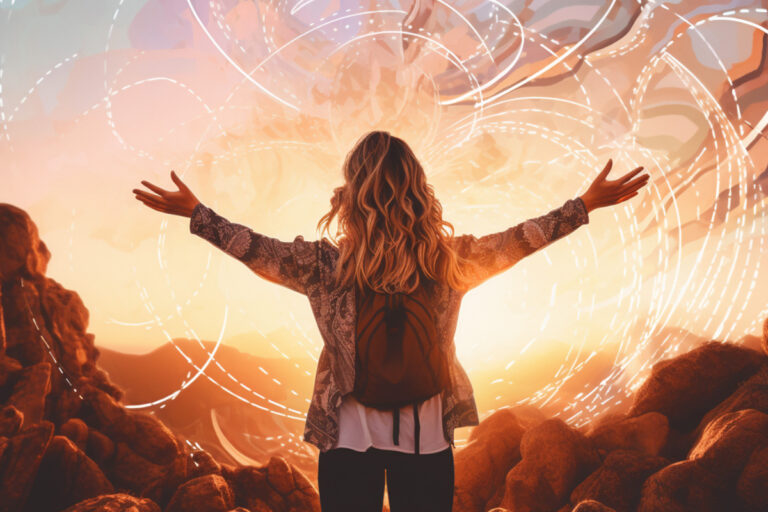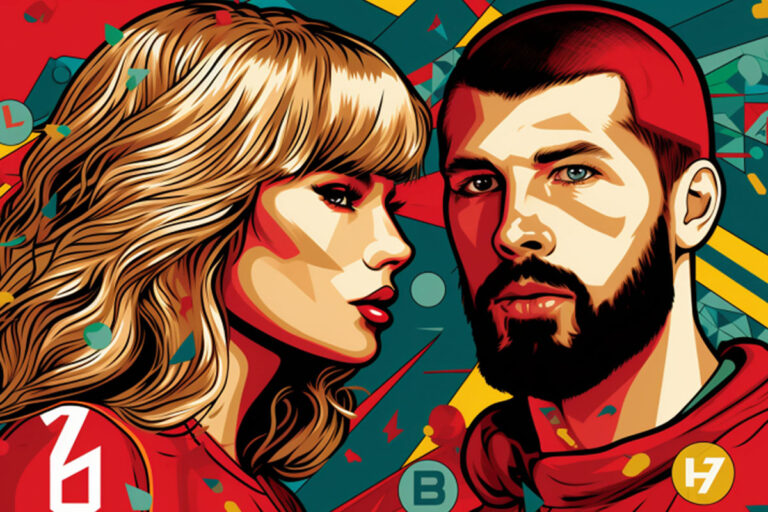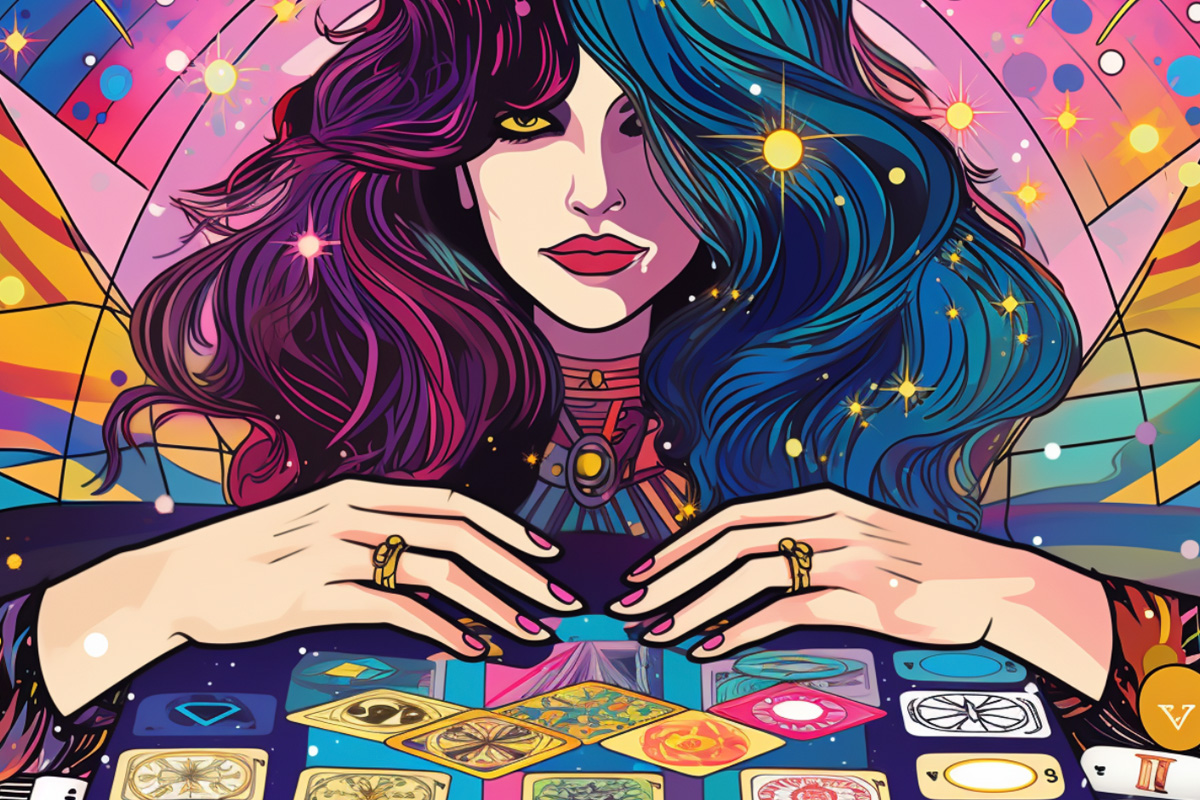Are you intrigued by the mystical allure of tarot cards? If so, you’re not alone. Those beautifully illustrated decks seem to hold the secrets of the universe in their hands.
Tarot has fascinated and enchanted people for centuries, and there’s much more to it than meets the eye. Today we’re diving into the fundamentals of reading tarot from a psychological and Jungian perspective, with a focus on how it can strengthen your intuition. So, grab your favorite deck and a cup of tea, and let’s embark on an enlightening journey.
Tarot Cards: More than Just Pretty Pictures
First things first, let’s demystify the tarot. It’s not about fortune-telling or predicting the future with crystal ball precision. Instead, think of tarot cards as a mirror that reflects your inner world, thoughts, feelings, and experiences. Each card in the deck represents a unique aspect of human life and psyche, making it a powerful tool for self-reflection and personal growth.
Carl Jung and the Collective Unconscious
To understand the psychological roots of tarot, we have to talk about Carl Jung, the renowned Swiss psychiatrist and psychoanalyst. Jung believed that the human psyche was a vast, interconnected web of thoughts, emotions, and experiences that he called the “collective unconscious.” He theorized that our individual psyches were linked to this collective unconscious, where archetypal symbols and images resided.
Tarot cards, with their archetypal imagery, tap into this collective unconscious. The symbols on the cards are like universal signposts, touching upon experiences and emotions that resonate with us on a deep, almost primal level. When we engage with tarot, we’re essentially having a conversation with our own psyche, drawing out insights that may have been hidden or overlooked.
The Tarot Deck: A Map of the Psyche
A standard tarot deck consists of 78 cards, divided into two main categories: the Major Arcana (22 cards) and the Minor Arcana (56 cards). Each card carries its own unique symbolism, and when laid out in a spread, they create a narrative that reflects our current situation or inquiry.
The Major Arcana represents significant life events and psychological milestones, while the Minor Arcana delves into the day-to-day aspects of our lives. Together, they form a comprehensive map of the human experience, making tarot a versatile tool for exploration and introspection.
Strengthening Intuition Through Tarot
Now that we’ve laid the groundwork, let’s focus on how tarot can enhance your intuition. Intuition is your inner guidance system, the quiet voice within that often knows what’s best for you, even when your rational mind is uncertain. Tarot serves as a conduit for accessing and developing this innate intuition.
- Intuitive Card Selection: Start by holding your deck and taking a few deep breaths to center yourself. Close your eyes, and with an open heart, ask a question or set an intention. As you shuffle the cards, trust your intuition to guide you in selecting the cards. Your instincts will lead you to the cards that hold the answers or insights you seek.
- Trust Your First Impressions: When you lay out the cards, don’t overthink it. Your initial reactions to the images and symbols on the cards are crucial. Jungians often refer to this as “active imagination.” Let your mind wander and allow associations to flow naturally. What emotions or memories do the cards trigger? Trust the intuitive nudges you receive.
- Journaling and Reflection: Keep a tarot journal to record your readings and your interpretations. This practice helps you track your progress, notice patterns, and refine your intuition over time. Write down your initial feelings and thoughts about each card, and revisit your journal entries to see how your understanding evolves.
- Meditation and Visualization: Incorporate meditation and visualization into your tarot practice. Close your eyes, hold a card in your mind, and imagine stepping into the scene on the card. Engage your senses—what do you see, hear, smell, and feel? This immersive approach deepens your connection to the cards and fosters intuitive insights.
- Dream Analysis: Pay attention to your dreams after working with tarot. Jung believed that dreams were a direct pathway to the unconscious mind. Note any recurring symbols, themes, or emotions in your dreams that may correlate with your tarot readings. This cross-referencing can reveal powerful insights.
The Archetypes Within
Jung’s concept of archetypes plays a significant role in understanding tarot from a psychological perspective. Archetypes are universal symbols or themes that appear in myths, dreams, and folklore across cultures and time periods. The tarot deck is rich with archetypal imagery, and by exploring these archetypes, you can gain profound insights into your own psyche.
Let’s take a look at a few prominent archetypes commonly found in the tarot:
- The Fool: Represented by card 0, The Fool symbolizes the journey of self-discovery and the willingness to embrace the unknown. It encourages us to take risks and trust our instincts, mirroring the intuitive path we follow when reading tarot.
- The High Priestess: This card embodies intuition, mystery, and the unconscious mind. When the High Priestess appears, it’s a reminder to listen to your inner voice and trust your instincts, reinforcing the role of intuition in tarot.
- The Hermit: Often depicted as a figure in solitude, The Hermit signifies introspection and inner wisdom. It encourages you to retreat into your inner world, which is precisely what happens during a tarot reading when you tap into your intuitive insights.
- The Lovers: Beyond its romantic connotations, The Lovers card represents choices and partnerships. It encourages you to align with your true self and make decisions that resonate with your inner values, which is a fundamental aspect of intuitive decision-making.
- The Tower: This card represents unexpected upheaval and change. When it appears in a reading, it can signify a breakthrough or revelation—moments when your intuition guides you to see a situation from a different perspective.
Empowerment through Self-Reflection
As you continue your tarot journey from a Jungian perspective, you’ll discover that the true magic lies within you. Tarot is a tool that empowers you to explore your inner world, unlock your intuition, and tap into the wisdom of the collective unconscious. It’s not about seeking answers outside of yourself; it’s about embracing the guidance that already exists within.
Remember that tarot is a personal and evolving practice. Your intuition will grow stronger with time and dedication. Be patient with yourself, and don’t be afraid to experiment with different spreads, decks, or approaches. The more you engage with tarot, the deeper your connection to your own psyche will become.
Tarot is a fascinating journey into the depths of your psyche, guided by the wisdom of Carl Jung and the power of archetypes. It’s a tool that strengthens your intuition, helping you navigate life’s twists and turns with greater clarity and self-awareness. So, embrace the cards, trust your intuition, and embark on a profound journey of self-discovery through the mystical world of tarot. Happy reading!




